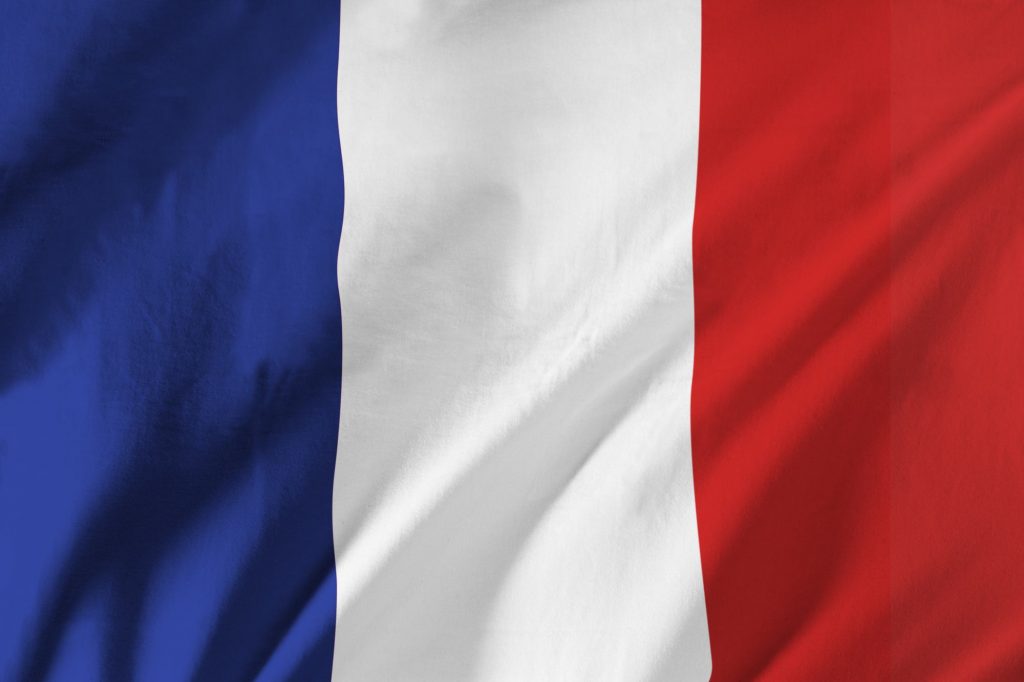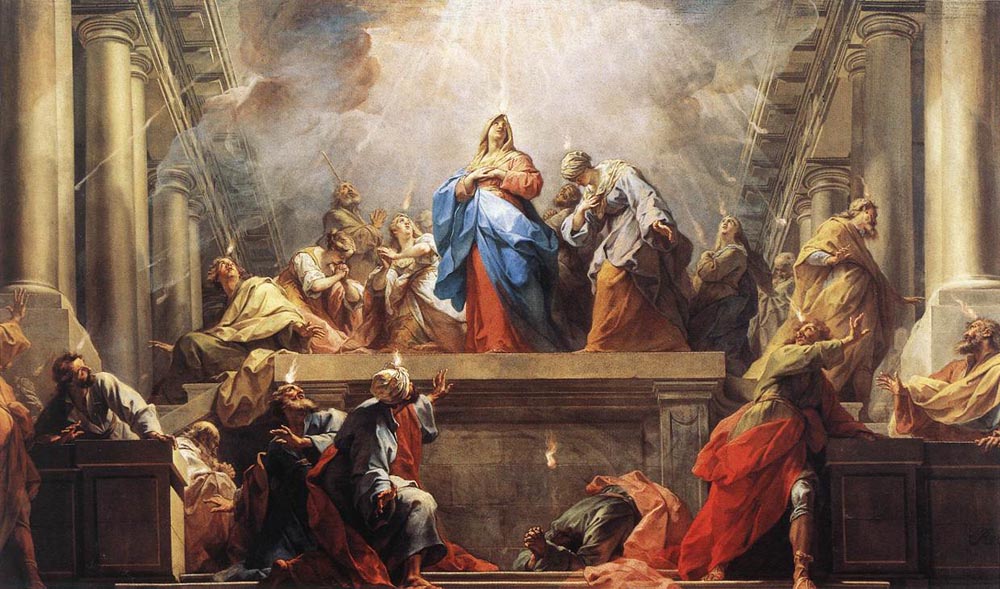 Pentecôte (Pentecost), by Jean II Restout (1732)
Pentecôte (Pentecost), by Jean II Restout (1732)
ONE of the great mysteries of the “end times” being unveiled at this hour is the reality that Jesus Christ is coming, not in the flesh, but in Spirit to establish His Kingdom and reign among all the nations. Yes, Jesus will come in His glorified flesh eventually, but His final coming is reserved for that literal “last day” on earth when time will cease. So, when several seers around the world continue to say, “Jesus is coming soon” to establish His Kingdom in an “Era of Peace,” what does this mean? Is it biblical and is it in Catholic Tradition?
THREE PURPOSES
Well, there is what the Early Church Fathers and several doctors of the Church have referred to as a “middle coming” of Christ that brings about His definitive spiritual reign in the Church, for three purposes. The first is to prepare for Himself a spotless Bride for the Wedding Feast of the Lamb.
…he chose us in him, before the foundation of the world, to be holy and without blemish before him… that he might present to himself the church in splendor, without spot or wrinkle or any such thing, that she might be holy and without blemish. (Eph 1:4, 5:27)
This spotless Bride must therefore be a unified bride. So this “middle coming” will also bring about the unity of the Body of Christ, [1]cf. The Coming Wave of Unity both Jew and Gentile, as the Scriptures foretell:
I have other sheep that do not belong to this fold. These also I must lead, and they will hear my voice, and there will be one flock, one shepherd…. a hardening has come upon Israel in part, until the full number of the Gentiles comes in, and thus all Israel will be saved… (Rom 11:25-26)
And the third purpose is as a witness to all the nations, a Vindication of Wisdom:
‘This Gospel of the kingdom’ says the Lord, ‘shall be preached in the whole world, for a testimony to all nations, and then shall the consummation come.’ —Council of Trent, from Catechism of the Council of Trent; cited in The Splendor of Creation, Rev. Joseph Iannuzzi, p. 53
IN SCRIPTURE
This so-called “middle coming” is indeed in Scripture and, in truth, the Church Fathers recognized it from the beginning. St. John’s Revelation speaks of Jesus coming as a “rider upon a white horse” who is “Faithful and True” who “strikes the nations” with the sword of His mouth, putting to death the “beast” and “false prophet” who led the nations astray and many into apostasy (Rev 19:11-21). Then Christ reigns in His Church in the entire world for a symbolic period of a “thousand years”, an “era of peace” (Rev 20:1-6). It’s clearly not the end of the world. During this time, Satan is chained in the “abyss.” But then, after this period of peace, Satan is released for a short time; he leads the nations for one last assault against the “camp of the saints”… but it totally fails. Fire falls from heaven — and this is really key — the devil is then cast into Hell for eternity…
…where the beast and the false prophet were. (Rev 20:10)
That’s why those who say the Antichrist only appears at the very end of the world are mistaken. It contradicts Scripture as well as the Early Church Fathers who taught that the “son of perdition” comes before this period of peace, what they also called a “sabbath rest” for the Church.
It’s important to note that the prophet Isaiah gives this exact prophecy himself of Christ coming in a judgment of the living followed by an Era of Peace:
He shall strike the ruthless with the rod of his mouth, and with the breath of his lips he shall slay the wicked… Then the wolf shall be a guest of the lamb, and the leopard shall lie down with the young goat… the earth shall be filled with knowledge of the LORD, as water covers the sea. (Isaiah 11:4-9)
It is crucial to note that we have the testimony of Church Fathers Papias and Polycarp that these things were taught directly by St. John in both the oral and written tradition:
And these things are borne witness to in writing by Papias, the hearer of John, and a companion of Polycarp, in his fourth book; for there were five books compiled by him. —St. Irenaeus, Against Heresies, Book V, Chapter 33, n. 4
I am able to describe the very place in which the blessed Polycarp sat as he discoursed, and his goings out and his comings in, and the manner of his life, and his physical appearance, and his discourses to the people, and the accounts which he gave of his intercourse with John and with the others who had seen the Lord… Polycarp related all things in harmony with the Scriptures. —St. Irenaeus, from Eusebius, Church History, Ch. 20, n.6
Hence, St. Irenaeus summarizes what they taught as students of St. John himself:
But when The Antichrist shall have devastated all things in this world, he will reign for three years and six months, and sit in the temple at Jerusalem; and then the Lord will come from Heaven in the clouds… sending this man and those who follow him into the lake of fire; but bringing in for the righteous the times of the kingdom, that is, the rest, the hallowed seventh day… These are to take place in the times of the kingdom, that is, upon the seventh day… the true Sabbath of the righteous… Those who saw John, the Lord’s disciple, [tell us] that they heard from him how the Lord taught and spoke about these times… —St. Irenaeus of Lyons, Church Father (140–202 A.D.); Adversus Haereses, Irenaeus of Lyons, V.33.3.4,The Fathers of the Church, CIMA Publishing Co.
So, let’s continue to flesh out the “theology” of this “middle coming”…
THE MIDDLE COMING
Some readers may find it strange to hear the term “middle coming” since, in classical language, we refer to the birth of Christ as the “first” coming and His return at the end of time as the “second” coming. [2]cf. The Second Coming
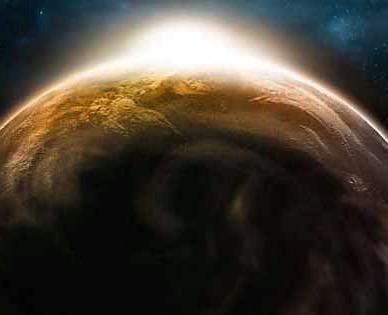 However, as I wrote in my letter to the Pope, Dear Holy Father… He is Coming, the “middle coming” could also be considered as the dawn that breaks, that light that comes before the sun itself rises. They are part of the same event—sunrise—and are intrinsically related, yet distinct events. This is why the Church Fathers taught that the “day of the Lord” is not a 24 hour period, rather:
However, as I wrote in my letter to the Pope, Dear Holy Father… He is Coming, the “middle coming” could also be considered as the dawn that breaks, that light that comes before the sun itself rises. They are part of the same event—sunrise—and are intrinsically related, yet distinct events. This is why the Church Fathers taught that the “day of the Lord” is not a 24 hour period, rather:
…this day of ours, which is bounded by the rising and the setting of the sun, is a representation of that great day to which the circuit of a thousand years affixes its limits. —Lactantius, Fathers of the Church: The Divine Institutes, Book VII, Chapter 14, Catholic Encyclopedia; www.newadvent.org
And again,
Behold, the Day of the Lord shall be a thousand years. —Letter of Barnabas, The Fathers of the Church, Ch. 15
They are speaking of that period, after the death of the “beast and false prophet”, [3]cf. Rev 19:20 but before the final uprising against the Church through “Gog and Magog” (those nations that definitively reject the Gospel). [4]cf. Rev 20:7-10 It is that period that St. John referred symbolically to as a “thousand years” when Satan will be chained in the abyss.
It implies a period of time, the duration of which is unknown to men… —Cardinal Jean Daniélou, A History of Early Christian Doctrine, p. 377-378 (as cited in The Splendor of Creation, p. 198-199, Rev. Joseph Iannuzzi
The Church at that time, purified in part by the persecution of the “lawless one”, will experience a New and Divine Holiness through the outpouring of the Holy Spirit. It will bring the Church to the height of her royal priesthood, which is the pinnacle of the Day of the Lord.
…they will be priests of God and of Christ, and they will reign with him for [the] thousand years. (Rev 20:6)
The Church, which comprises the elect, is fittingly styled daybreak or dawn… It will be fully day for her when she shines with the perfect brilliance of interior light. —St. Gregory the Great, Pope; Liturgy of the Hours, Vol III, p. 308
St. Cyril delineates this “middle coming” of Christ when He will reign in His saints. He refers to it in the linear sense as a “second” coming.
We do not preach only one coming of Christ, but a second as well, much more glorious than the first. The first coming was marked by patience; the second will bring the crown of a divine kingdom. —The Catechetical Instruction by St. Cyril of Jerusalem, Lecture 15; cf. The Splendor of Creation, Rev. Joseph Iannuzzi, p. 59
Our Lord himself, after speaking of the signs of the times, spoke of this coming of the “Kingdom”:
…when you see these things happening, know that the kingdom of God is near. (Luk 21:31)
This “crown of a divine kingdom” is the completion of the work of redempti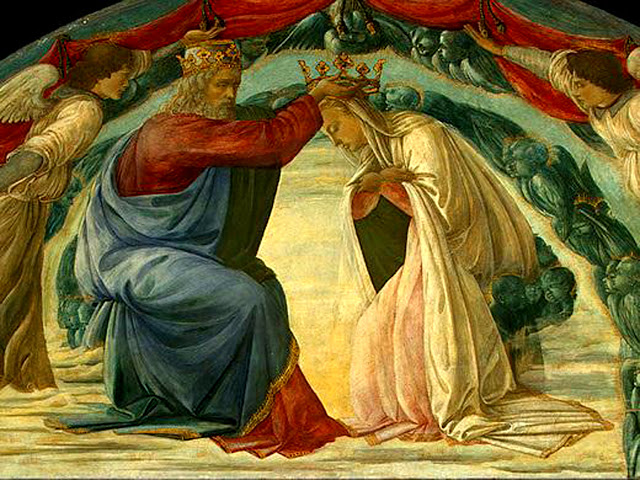 on in the Body of Christ—her “last stage” of sanctification—when the Divine Will will reign in the Church “on earth as it is in Heaven” — the Kingdom of the Divine Will:
on in the Body of Christ—her “last stage” of sanctification—when the Divine Will will reign in the Church “on earth as it is in Heaven” — the Kingdom of the Divine Will:
Have you seen what living in My Will is?… It is to enjoy, while remaining on earth, all the Divine qualities… It is the Sanctity not yet known, and which I will make known, which will set in place the last ornament, the most beautiful and most brilliant among all the other sanctities, and that will be the crown and completion of all other sanctities. —Servant of God Luisa Picarretta, The Gift of Living in the Divine Will, Rev. Joseph Iannuzzi; n. 4.1.2.1.1 A
It will be the kind of union Adam enjoyed with God before the fall, and which was known by Our Lady, whom Pope Benedict XIV called “the image of the Church to come.” [5]Spe Salvi, n.50 Thus, the Sanctity of sanctities is accomplished through the intervention of this “Woman clothed in the sun” and the outpouring of the Holy Spirit to, in effect, “birth” Jesus fully within the Church. This is why Our Lady is also known as “the dawn”, she who is “clothed in the sun”, thereby heralding “the Sun’s” coming. St. Cyril continues…
There is a birth from God before the ages, and a birth from a virgin at the fullness of time. There is a hidden coming, like that of rain on fleece, and a coming before all eyes, still in the future [when] he will come again in glory to judge the living and the dead. —The Catechetical Instruction by St. Cyril of Jerusalem, Lecture 15; translation from The Splendor of Creation, Rev. Joseph Iannuzzi, p. 59
This “hidden coming” is what the Early Church Fathers understood as the inauguration of Christ’s reign in a new modality. Just as Pentecost catapulted the budding early Church into a new plane of divine operation, so too, this “new Pentecost” will likewise transfigure the Church.
We do confess that a kingdom is promised to us upon the earth, although before heaven, only in another state of existence… —Tertullian (155–240 A.D.), Nicene Church Father; Adversus Marcion, Ante-Nicene Fathers, Henrickson Publishers, 1995, Vol. 3, pp. 342-343)
 This is confirmed in magisterial statements such as that of a theological commission of 1952 that produced The Teaching of the Catholic Church. [6]Inasmuch as the cited work bears the Church’s seal’s of approval, i.e., the imprimatur and the nihil obstat, it is an exercise of the Magisterium. When an individual bishop grants the Church’s official imprimatur, and neither the Pope nor the body of bishops oppose the conferral of this seal, it is an exercise of the ordinary Magisterium.
This is confirmed in magisterial statements such as that of a theological commission of 1952 that produced The Teaching of the Catholic Church. [6]Inasmuch as the cited work bears the Church’s seal’s of approval, i.e., the imprimatur and the nihil obstat, it is an exercise of the Magisterium. When an individual bishop grants the Church’s official imprimatur, and neither the Pope nor the body of bishops oppose the conferral of this seal, it is an exercise of the ordinary Magisterium.
If before that final end there is to be a period, more or less prolonged, of triumphant sanctity, such a result will be brought about not by the apparition of the person of Christ in Majesty but by the operation of those powers of sanctification which are now at work, the Holy Ghost and the Sacraments of the Church. —The Teaching of the Catholic Church: A Summary of Catholic Doctrine [London: Burns Oates & Washbourne, 1952] p. 1140
THE SABBATH REST
Jesus often taught that “the kingdom of heaven is at hand.” [7]cf. Matt 3:2 Moreover, He taught us to pray, “Thy kingdom come, thy will be done on earth as it is in Heaven.” Thus, St. Bernard sheds more light on this hidden coming.
In case someone should think that what we say about this middle coming is sheer invention, listen to what our Lord himself says: If anyone loves me, he will keep my word, and my Father will love him, and we will come to him. —St. Bernard, Liturgy of the Hours, Vol I, p. 169
The “kingdom of God” then, is intrinsically tied to the “will of God.” As Pope Benedict said,
…we recognize that “heaven” is where the will of God is done, and that “earth” becomes “heaven”—i.e., the place of the presence of love, of goodness, of truth and of divine beauty—only if on earth the will of God is done. —POPE BENEDICT XVI, General Audience, February 1st, 2012, Vatican City
On the one hand, we can observe the coming of Christ throughout the Church’s 2000 year history, most especially in His saints and in the renewals that their particular fiats brought. However, the middle coming we are referring to here is an ushering in of the “age of the Spirit”, an era in which, corporately as a Body, the Church will live in 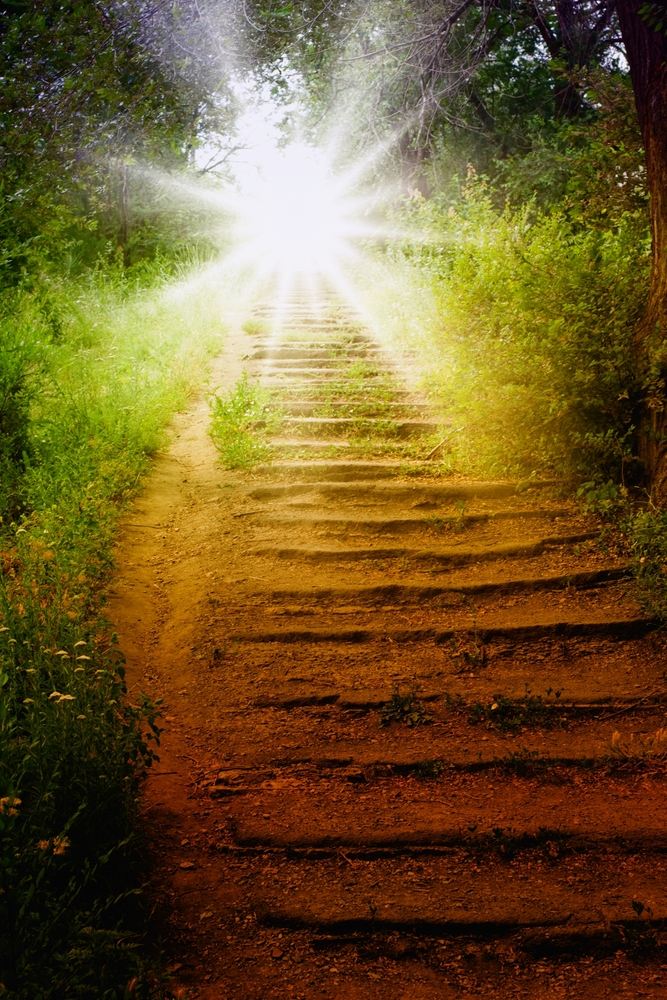 the Divine Will “on earth as it is in heaven” [8]cf. The Coming New and Divine Holiness. It will be as close to Heaven as the Church will get, without the beatific vision.
the Divine Will “on earth as it is in heaven” [8]cf. The Coming New and Divine Holiness. It will be as close to Heaven as the Church will get, without the beatific vision.
It is a union of the same nature as that of the union of heaven, except that in paradise the veil which conceals the Divinity disappears… —Jesus to Venerable Conchita, Ronda Chervin, Walk With Me Jesus; cited in The Crown and Completion of All Sanctities, Daniel O’Connor, p. 12
And thus, in such union, the Church Fathers foresaw that this era would also be “a rest” when the People of God, having labored six days (ie. “six thousand years”) will rest on the seventh day, a kind of “sabbath” for the Church.
Because this [middle] coming lies between the other two, it is like a road on which we travel from the first coming to the last. In the first, Christ was our redemption; in the last, he will appear as our life; in this middle coming, he is our rest and consolation.…. In his first coming Our Lord came in our flesh and in our weakness; in this middle coming he comes in spirit and power; in the final coming he will be seen in glory and majesty… —St. Bernard, Liturgy of the Hours, Vol I, p. 169
Bernard’s theology is consonant with the Early Church Fathers who foretold that this rest would come after the death of the “lawless one” ushering in…
…the times of the kingdom, that is, the rest, the hallowed seventh day… These are to take place in the times of the kingdom, that is, upon the seventh day… the true Sabbath of the righteous. —St. Irenaeus of Lyons, Church Father (140–202 A.D.); Adversus Haereses, Irenaeus of Lyons, V.33.3.4, The Fathers of the Church, CIMA Publishing Co.
…when His Son will come and destroy the time of the lawless one and judge the godless, and change the sun and the moon and the stars—then He shall indeed rest on the seventh day… after giving rest to all things, I will make the beginning of the eighth day, that is, the beginning of another world. —Letter of Barnabas (70-79 A.D.), written by a second century Apostolic Father
THE KINGDOM COMES IN DARKNESS
Dear young people, it is up to you to be the watchmen of the morning who announce the coming of the sun who is the Risen Christ! —POPE JOHN PAUL II, Message of the Holy Father to the Youth of the World, XVII World Youth Day, n. 3; (cf. Is 21:11-12)
But this coming, as so many of the popes have said, is not the end of the world, but the accomplishment of the plans of redemption. [9]cf. The Popes, and the Dawning Era Thus, we are to be…
…watchmen who proclaim to the world a new dawn of hope, brotherhood and peace.—POPE JOHN PAUL II, Address to the Guanelli Youth Movement, April 20th, 2002, www.vatican.va
If Our Lady is “the dawn” that heralds the coming “sun of justice”, then when exactly does this “new Pentecost” take place? The answer is almost as difficult as pinpointing when the first ray of dawn begins. After all, Jesus said:
The coming of the Kingdom of God cannot be observed, and no one will announce, ‘Look, here it is,’ or, ‘There it is.’ For behold, the Kingdom of God is among you. (Luke 17:20-21)
That said, certain approved prophetic revelations and the Scriptures themselves combine to give an insight into approximately when the “temporal” Kingdom begins to be ushered in—and it points to this third millennium.
The Church of the Millennium must have an increased consciousness of being the Kingdom of God in its initial stage. —POPE JOHN PAUL II, L’Osservatore Romano, English Edition, April 25th, 1988
In Revelation 12, we read of the confrontation between the Woman 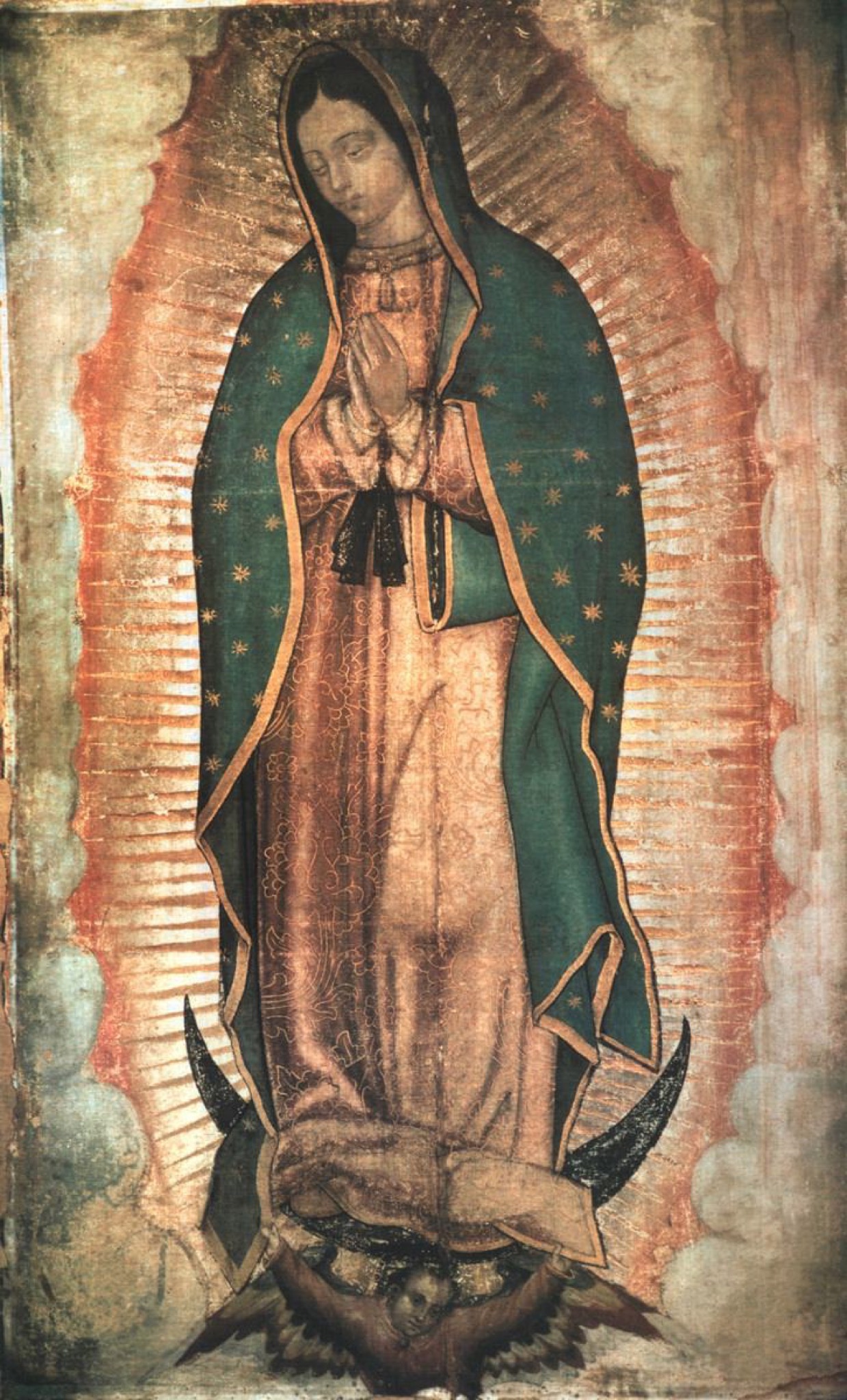 and the dragon. She is laboring to give birth to a “son”—that is, laboring for the middle coming of Christ.
and the dragon. She is laboring to give birth to a “son”—that is, laboring for the middle coming of Christ.
This Woman represents Mary, the Mother of the Redeemer, but she represents at the same time the whole Church, the People of God of all times, the Church that at all times, with great pain, again gives birth to Christ. —Castel Gondolfo, Italy, Aug. 23, 2006; Zenit
Again, I have written in detail about this battle between the Woman and the dragon over the past four centuries in my book The Final Confrontation and in other places here. However, the dragon, who attempts to devour the child, fails.
She gave birth to a son, a male child, destined to rule all the nations with an iron rod. Her child was caught up to God and his throne. (Rev 12:5)
While this is a reference to Christ’s Ascension, it also refers to the spiritual ascension of the Church. As St. Paul taught, the Father has “raised us up with him, and seated us with him in the heavens in Christ Jesus.” [10]Eph 2:6
For the mysteries of Jesus are not yet completely perfected and fulfilled. They are complete, indeed, in the person of Jesus, but not in us, who are his members, nor in the Church, which is his mystical body. —St. John Eudes, treatise “On the Kingdom of Jesus”, Liturgy of the Hours, Vol IV, p 559
Just as Jesus emptied himself in order to live only in the Father’s will, so too, the Church must empty herself so that like her Master, she too lives only in the Divine Will:
I came down from heaven not to do my own will but the will of the one who sent me. (John 6:38)
Christ enables us to live in him all that he himself lived, and he lives it in us. —Catechism of the Catholic Church, n. 521
After summarizing the confrontation between the Woman and the dragon, St. John goes into detail. He witnesses St. Michael and the angels bring about a decisive battle against Satan, casting him out of “heaven” to the “earth.” Here again, in the context, St. John is not speaking of the primordial battle when Lucifer was evicted from Heaven at the beginning of time. Rather, St. Paul teaches 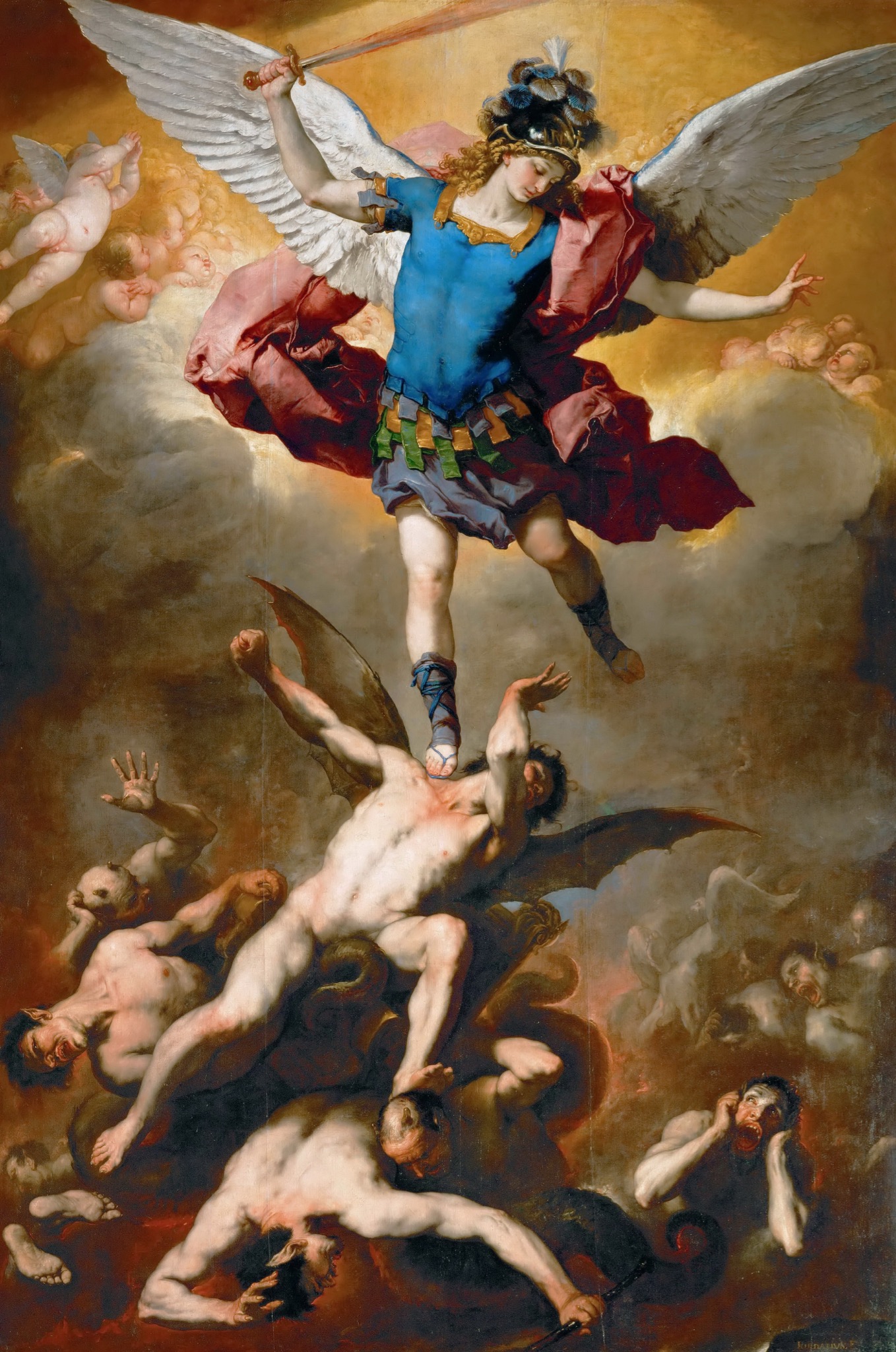 that “our struggle is not with flesh and blood but with the principalities, with the powers, with the world rulers of this present darkness, with the evil spirits in the heavens.” [11]Eph 6:12 That is, Satan loses a certain domain of power “in the heavens” or “air”. Isn’t this what Pope Leo XIII has had us praying for now for over a century in the prayer to St. Michael the Archangel?
that “our struggle is not with flesh and blood but with the principalities, with the powers, with the world rulers of this present darkness, with the evil spirits in the heavens.” [11]Eph 6:12 That is, Satan loses a certain domain of power “in the heavens” or “air”. Isn’t this what Pope Leo XIII has had us praying for now for over a century in the prayer to St. Michael the Archangel?
…do thou, O Prince of the heavenly host, by the power of God, thrust into hell Satan, and all evil spirits who prowl throughout the world seeking the ruin of souls. —composed by POPE LEO XIII after hearing during Mass a conversation, in which Satan asks God for permission to test the earth for one century.
But here is what I want to point out in the context of this writing. When this Exorcism of the Dragon occurs, suddenly St. John hears a loud voice in heaven say:
Now have salvation and power come, and the kingdom of our God and the authority of his Anointed. For the accuser of our brothers is cast out, who accuses them before our God day and night. They conquered him by the blood of the Lamb and by the word of their testimony; love for life did not deter them from death. Therefore, rejoice, you heavens, and you who dwell in them. But woe to you, earth and sea, for the Devil has come down to you in great fury, for he knows he has but a short time. (Rev 12:10-12)
Heaven itself declares that this exorcism inaugurates a new era: “Now have salvation and power come, and the kingdom of our God…” And yet, we read on that the devil has a “short time.” Indeed, Satan takes whatever power he has left and concentrates it into a “beast” in a “final confrontation” against the Church (see Rev 13). But that doesn’t matter: God has rescued a remnant of people in whom the Kingdom has come. I believe this is what Our Lady has been speaking of when she refers to a coming “blessing”, the “Flame of Love”, “Illumination”, etc. [12]cf. The Convergence and the Blessing It is the initiation of a grace that will bring the Church into a final confrontation with Satan. So whether the saints live or whether they die during the time of the beast’s persecution, they will reign with Christ.
I also saw the souls of those who had been beheaded for their witness to Jesus and for the word of God, and who had not worshiped the beast or its image nor had accepted its mark on their foreheads or hands. They came to life and they reigned with Christ for a thousand years. (Rev 20:4)
The Kingdom comes, then, during the darkness of the dragon’s deception. That is why I believe that this Exorcism of the Dragon may also be the same event as the breaking of the 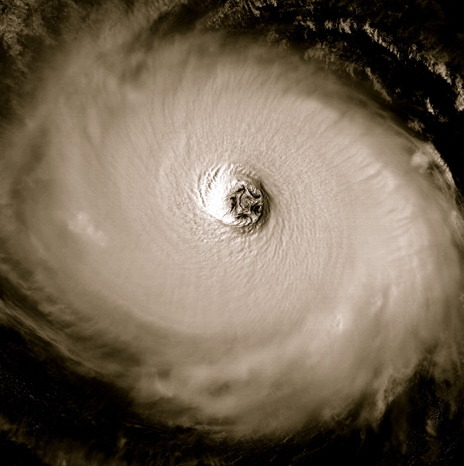 “sixth seal” [13]cf. The Seven Seals of Revolution or the so-called “warning” or “illumination of conscience”, as Blessed Anna Maria Taigi (1769-1837) called it (see The Great Liberation).
“sixth seal” [13]cf. The Seven Seals of Revolution or the so-called “warning” or “illumination of conscience”, as Blessed Anna Maria Taigi (1769-1837) called it (see The Great Liberation).
She indicated that this illumination of conscience would result in the saving of many souls because many would repent as a result of this “warning”… this miracle of “self-illumination.” —Fr. Joseph Iannuzzi in Antichrist and the End Times, P. 36
If Jesus is “the light of the world”, then the light of illumination seems to be that grace when now “salvation and power come, and the kingdom of our God…” Again, in the approved messages to Elizabeth Kindelmann, Our Lady says:
It will be the Great Miracle of light blinding Satan… The torrential flood of blessings about to jolt the world must begin with the small number of the most humble souls. —Our Lady to Elizabeth, www.theflameoflove.org
And in a very interesting interview on the renowned apparitions at Medjugorje, [14]cf. On Medjugorje which have gained some form of approval by the Ruini Commission, American attorney, Jan Connell, asked the alleged seer Mirjana about the “century of testing” that inspired Pope Leo XIII to write the prayer to St. Michael the Archangel.
J: Concerning this century, is it true that the Blessed Mother related a dialogue to you between God and the devil? In it… God allowed the devil one century in which to exercise extended power, and the devil chose these very times.
The visionary answered “Yes”, citing as proof the great divisions we see particularly among families today.
Connell asks:
J: Will the fulfillment of the secrets of Medjugorje break the power of Satan?
M: Yes.
J: How?
M: That is part of the secrets.
J: Can you tell us anything [regarding the secrets]?
M: There will be events on the earth as warning to the world before the visible sign is given to humanity. —p. 23, 21; Queen of the Cosmos (Paraclete Press, 2005, Revised Edition)
PREPARING FOR PENTECOST
Brothers and sisters, what all this amounts to is a clarion call to the Body of Christ to prepare, not so much for Antichrist, but for the coming of Christ—the coming of His Kingdom. It is a call to prepare 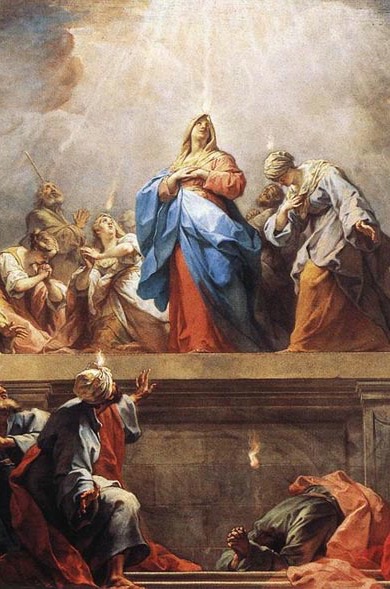 for this “pneumatic” or “spiritual” middle coming of Our Lord by way of the Holy Spirit and the Virgin Mary’s intercession. Hence, the pray of the Church’s liturgy takes on renewed significance:
for this “pneumatic” or “spiritual” middle coming of Our Lord by way of the Holy Spirit and the Virgin Mary’s intercession. Hence, the pray of the Church’s liturgy takes on renewed significance:
We humbly implore the Holy Ghost, the Paraclete, that He may “graciously grant to the Church the gifts of unity and peace,” and may renew the face of the earth by a fresh outpouring of His charity for the salvation of all. —POPE BENEDICT XV, Pacem Dei Munus Pulcherrimum, May 23rd, 1920
The time has come to exalt the Holy Spirit in the world… I desire that this last epoch be consecrated in a very special way to this Holy Spirit…It is his turn, it is his epoch, it is the triumph of love in My Church, in the whole universe. —Jesus to Venerable María Concepción Cabrera de Armida; Fr. Marie-Michel Philipon, Conchita: A Mother’s Spiritual Diary, p. 195-196
Pope Benedict affirms this renewal and grace in terms of a “middle coming” of Jesus:
Whereas people had previously spoken only of a twofold coming of Christ—once in Bethlehem and again at the end of time—Saint Bernard of Clairvaux spoke of an adventus medius, an intermediate coming, thanks to which he periodically renews His intervention in history. I believe that Bernard’s distinction strikes just the right note… —POPE BENEDICT XVI, Light of the World, p.182-183, A Conversation With Peter Seewald
The right note is that this “intermediate coming,” says Bernard, “is a hidden one; in it only the elect see the Lord within their own selves, and they are saved.” [15]cf. Liturgy of the Hours, Vol I, p. 169
Why not ask him to send us new witnesses of his presence today, in whom he himself will come to us? And this prayer, while it is not directly focused on the end of the world, is nevertheless a real prayer for his coming; it contains the full breadth of the prayer that he himself taught us: “Your kingdom come!” Come, Lord Jesus! —POPE BENEDICT XVI, Jesus of Nazareth, Holy Week: From the Entrance into Jerusalem to the Resurrection, p. 292, Ignatius Press
But neither should we view this solely as a future event. Even now, these graces are being given to the Church; even now, the Flame of Love is being increased in the Church. And thus, the “triumph of the Immaculate Heart” promised at Fatima is an ongoing process.
Fatima is still in its Third Day. We are now in the post Consecration period. The First Day was the apparition period. The Second was the post apparition, pre-Consecration period. The Fatima Week has not yet ended… People expect things to happen immediately within their own time frame. But Fatima is still in its Third Day. The Triumph is an ongoing process. —Sr. Lucia in an interview with Cardinal Vidal, October 11th, 1993; God’s Final Effort, John Haffert, 101 Foundation, 1999, p. 2; quoted in Private Revelation: Discerning With the Church, Dr. Mark Miravalle, p.65
Thus, said Pope Benedict, praying for the Triumph of the Immaculate Heart…
…is equivalent in meaning to our praying for the coming of God’s Kingdom… So you could say the triumph of God, the triumph of Mary, are quiet, they are real nonetheless… —Light of the World, p. 166, A Conversation With Peter Seewald
There are still many things to come in the years ahead. But a cursory look at the “signs of the times” tell us that the confrontation between the Woman and the dragon is coming to a head. “We are facing the final confrontation”, said St. John Paul II. And in it, we await the New Dawn, the coming of our Lord.
According to the Lord, the present time is the time of the Spirit and of witness, but also a time still marked by “distress” and the trial of evil which does not spare the Church and ushers in the struggles of the last days. It is a time of waiting and watching. —Catechism of the Catholic Church, 672
After purification through trial and suffering, the dawn of a new era is about to break.—POPE ST. JOHN PAUL II, General Audience, September 10, 2003
In individuals, Christ must destroy the night of mortal sin with the dawn of grace regained. In families, the night of indifference and coolness must give way to the sun of love. In factories, in cities, in nations, in lands of misunderstanding and hatred the night must grow bright as the day, nox sicut dies illuminabitur, and strife will cease and there will be peace. —POPE PIUX XII, Urbi et Orbi address, March 2nd, 1957; vatican.va
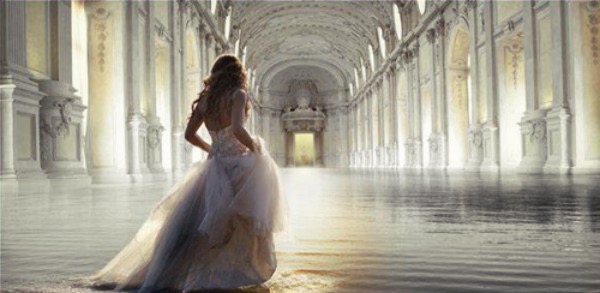
First published October 23rd, 2015.
RELATED READING
Millenarianism… What it is and is Not
A reflection on what if there is no “era of peace”: read What if…
The Coming of the Kingdom of God
Medjugorje… What You May Not Know
Medjugorje and the Smoking Guns
Thanks for your love, prayers, and support!
To journey with Mark in The Now Word,
click on the banner below to subscribe.
Your email will not be shared with anyone.
Footnotes
| ↑1 | cf. The Coming Wave of Unity |
|---|---|
| ↑2 | cf. The Second Coming |
| ↑3 | cf. Rev 19:20 |
| ↑4 | cf. Rev 20:7-10 |
| ↑5 | Spe Salvi, n.50 |
| ↑6 | Inasmuch as the cited work bears the Church’s seal’s of approval, i.e., the imprimatur and the nihil obstat, it is an exercise of the Magisterium. When an individual bishop grants the Church’s official imprimatur, and neither the Pope nor the body of bishops oppose the conferral of this seal, it is an exercise of the ordinary Magisterium. |
| ↑7 | cf. Matt 3:2 |
| ↑8 | cf. The Coming New and Divine Holiness |
| ↑9 | cf. The Popes, and the Dawning Era |
| ↑10 | Eph 2:6 |
| ↑11 | Eph 6:12 |
| ↑12 | cf. The Convergence and the Blessing |
| ↑13 | cf. The Seven Seals of Revolution |
| ↑14 | cf. On Medjugorje |
| ↑15 | cf. Liturgy of the Hours, Vol I, p. 169 |


